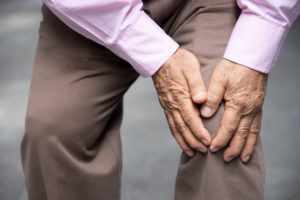- Staci Boudreaux, PA-C
Healthy bones don’t happen automatically, and the solution is more than just taking two calcium pills a day like the bottle tells you. Understanding the specifics about how to get your daily calcium intake the right way, the importance of maintaining a normal level of vitamin D in your body, and how to prevent falls would help prevent future bone fractures and promote healthy bones. As a Certified PA and Certified Clinical Densitometrist, I’m here to do just that!
Who is Susceptible to Osteoporosis?
Both men and women can have low bone density (commonly known as osteopenia or osteoporosis). Osteoporosis can affect people of all ages and ethnic backgrounds regardless of age, although it is more common in older adults. According to the National Osteoporosis Foundation, 50% of women and 25% of men will have a fracture due to osteoporosis in their lifetime. Why is that important to know? Imagine breaking an arm and having to be in a cast – one would have problems doing simple tasks. Now picture having a broken hip – one would have to have someone care for them either at home or in a nursing facility. What if one could have prevented those breaks from happening in the first place?
How is Osteoporosis Diagnosed?
So how is osteoporosis diagnosed? Bone density tests are the most common tool used to screen for osteoporosis. Women 65 years and older and men 70 years and older should get regular bone density testing, even if they don’t have any risk factors for low bone density. Women who have had symptoms of menopause for at least six months, whether through the normal aging process or total hysterectomy, should start getting their bone density tests done sooner, along with men 50 years and older who have even one risk factor for developing osteoporosis.
So, what are the risk factors? They include:
- family history of osteoporosis
- being postmenopausal
- being female
- smoking
- excessive alcohol intake (greater than three alcoholic beverages a day)
- long-term steroid use
- certain medical conditions
For a complete list of risk factors, visit the National Osteoporosis Foundation website.
Prevention and Treatment of Osteoporosis
Proper daily calcium and vitamin D intake along with exercise can help prevent low bone density from developing. These things are also used as part of treatment for osteopenia and osteoporosis. All adults 50 years of age and older need 1200mg of calcium a day for their bodies to function properly. If these adults don’t replenish their calcium levels every day, their muscles and nerves take it from their bones, and that can contribute to low bone density.
Ideally, everyone should get all 1200mg of calcium a day from their food. If the recommended amount of calcium per day is not achieved through food, supplements may help, but one should be mindful that supplements are just that – supplements – and they should not be solely relied on for calcium intake. It is recommended that patients don’t receive more than 600mg per day from a calcium supplement, and that they get at least 600mg of calcium a day from food. If all daily calcium is received in a supplement, that can increase the risk of developing kidney stones. The body can only absorb 600mg of calcium at a time, so it’s important not to consume more than this amount in one meal.
You must also be mindful of other medications and supplements you may be taking when using a calcium supplement. For example, calcium supplements must be taken four hours apart from thyroid medication to prevent interactions and taken a meal apart from acid reflux medications and iron supplements. Also, if your vitamin D level is found to be low on a blood test, calcium cannot get absorbed into the bone at all. There is recommended dosing of vitamin D3 based on age – however, someone with a low vitamin D level will need higher dosing to correct that.
Importance of Fall Prevention
If falls can be prevented, there is less likelihood of breaking bones. Both weight-bearing activities (on your feet moving around for any reason) and muscle-strengthening exercises (literally using a muscle to do anything that maintains muscle tone) are equally important tools for fall prevention along with balance and posture exercises.
Take Charge of Your Bone Health!
It’s important to be an active participant in your bone health. Be sure to ask a medical provider about ordering a bone density test when it’s time to start having them. Be consistent with getting the recommended daily calcium and vitamin D intake, and don’t forget to keep working on fall prevention to prevent broken bones.
For more information to get started on the path to healthier bones, or for a listing of medical providers who specialize in this area, please visit the Professional Partner’s Network section of the National Osteoporosis website. For a listing of Certified Clinical Densitometrists who have extra training in how to properly read bone density tests and manage patients in regards to their bone density, please visit the International Society For Clinical Densitometry’s website.


